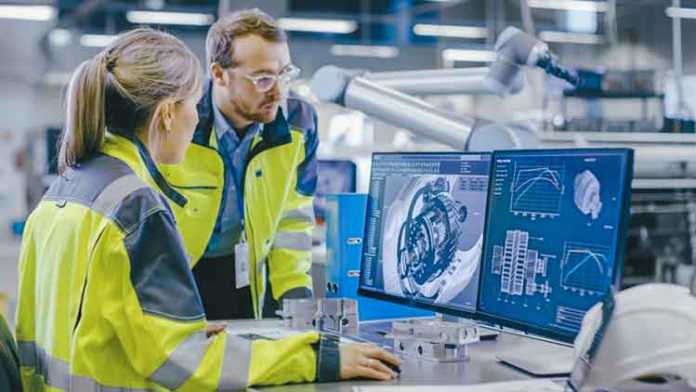The UK manufacturing industry has declined significantly over the past 50 years, however it still employs 2.7 million people and accounts for 45% of all exports. Interestingly, the manufacturing sector accounts for nearly 70% of research and development in the business world – placing it at the forefront of digital transformation. Operationally, digital transformation continues to have a significant impact on manufacturing in the UK. Businesses are benefitting from increased efficiency, optimisation, cost effectiveness, better safety standards and more effective quality control. Furthermore, decision making is becoming more informed for manufacturers – due to developments in real-time and big data. So, how is digital transformation changing the way we go about manufacturing?
Efficiency and Optimisation
With digital technology comes the opportunity for more effective optimisation of processes and procedures. Big data is providing real-time evidence to allow for more progressive policy and decision making – creating more capable and efficient manufacturing systems. Electrical automation has been around for decades, but digital transformation is taking this one step further. Machine learning and digital management systems allow for detailed reporting and process optimisation, helping to reduce operational costs and inefficiencies.
Cost Effectiveness
Digital transformation has changed the way that factories and warehouses operate. Now requiring fewer staff, operational costs and overheads can be slashed and reinvested elsewhere to create new, more intellectual jobs. These savings are consequently carried down the supply chain, benefitting consumers and businesses through more affordable commodities and supplies.
Adaptability
Manufacturing has historically been somewhat rigid and slow to change. But with developments brought about by digital transformation, production lines are more adaptable and responsive than ever before. The world changes fast and so do customer demands, industry trends and specifications. Smarter manufacturing allows production to be changed or redirected at a much faster pace to meet changing demands. This reduces the need for retraining and shortens disruptions to production.
Safety
One area that may not be as commonly associated with digital transformation in manufacturing is safety. Automation technology reduces the need for employee interaction with hazardous tools and machinery, therefore reducing the risk of accidents, damages and harm to workers. The hazards in a factory environment have transformed dramatically and warning signs from suppliers like RS have changed accordingly. Manufacturing hazards are more controllable and mitigatable now, benefitting everyone involved.
Quality control
Finally, digital transformation has given manufacturers a greater level of control over process and product quality. With less variance between skilled workers, automation technology has allowed for a more uniform output – reflecting in the mass-production units we see today. Furthermore, digital technology allows for more effective tracking, sorting and quality control procedures – reducing process-driven and operational losses.

































































